What are Sweat Bees?
What are Sweat Bees?
Sweat Bees 101
Sweat bees are part of the family Halictidae within the order Hymenoptera which includes bees, wasps, and ants. There are 500 different species of Halictidae in North America, making up a highly diverse family of insects. Depending on the particular species, these bees can be communal, semi-social, or solitary. Surprisingly, some species will even transition from solitary behavior to eusocial (a highly developed form of communal insect living), and vice versa, depending on the environmental characteristics including temperature, elevation, time of year, and other unknown stimuli.
As their name suggests, these insects are very drawn to perspiration as it provides a nice balanced mixture of moisture and salt. Thankfully, while they may be drawn to us, they are not particularly aggressive insects like their cousins the wasps.
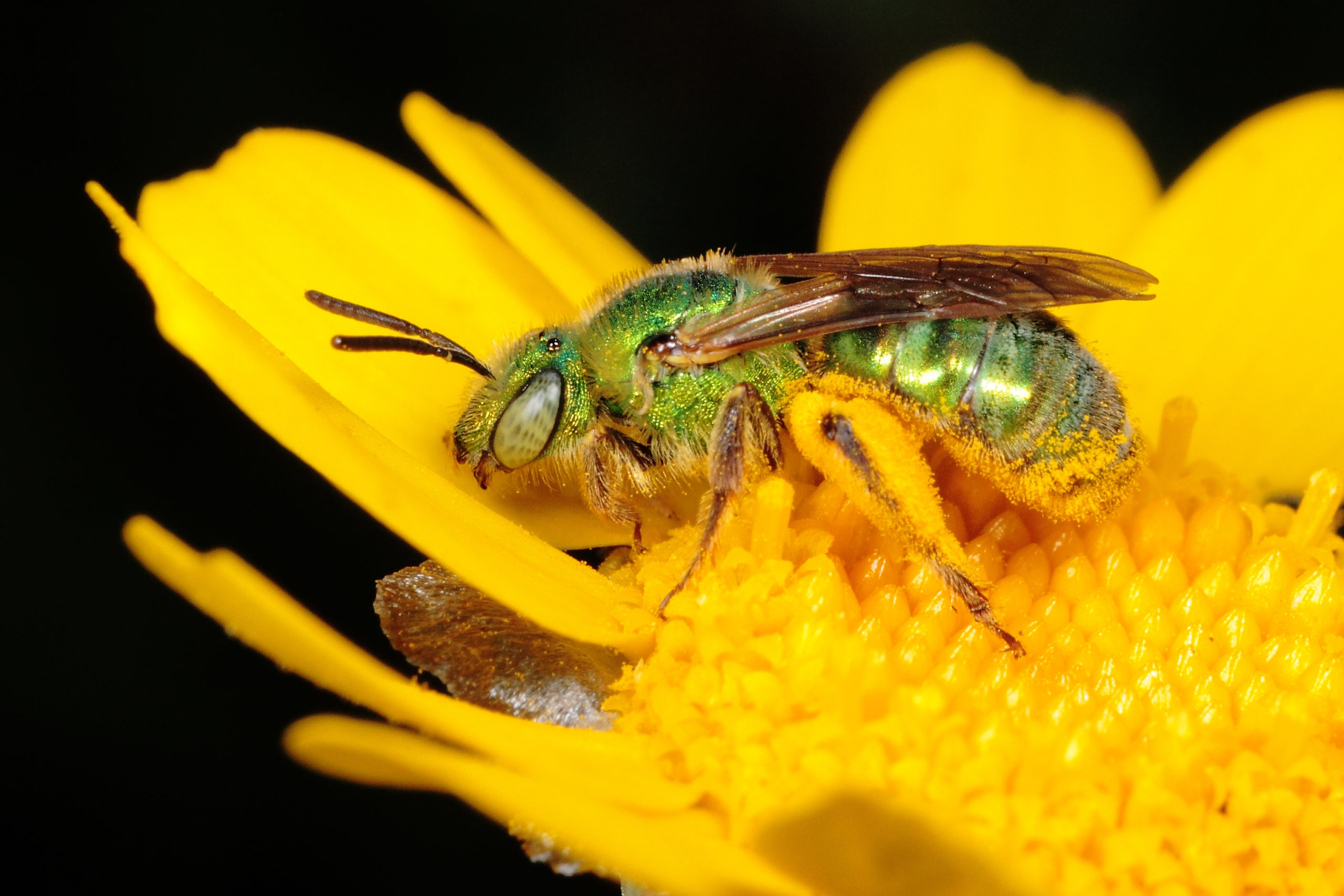
Appearance
Due to the vast diversity within their family, halictids can vary quite drastically in appearance. Most sweat bees are rather small in size and slender shaped, though a few species are a bit robust. They can be either metallic or dull, and most species are either black or green, while others can be blue and purple.
The males of each species normally resemble their females though smaller and lacking the dense hairs known as scopa that are present on the hind tibias of females in order to carry pollen.
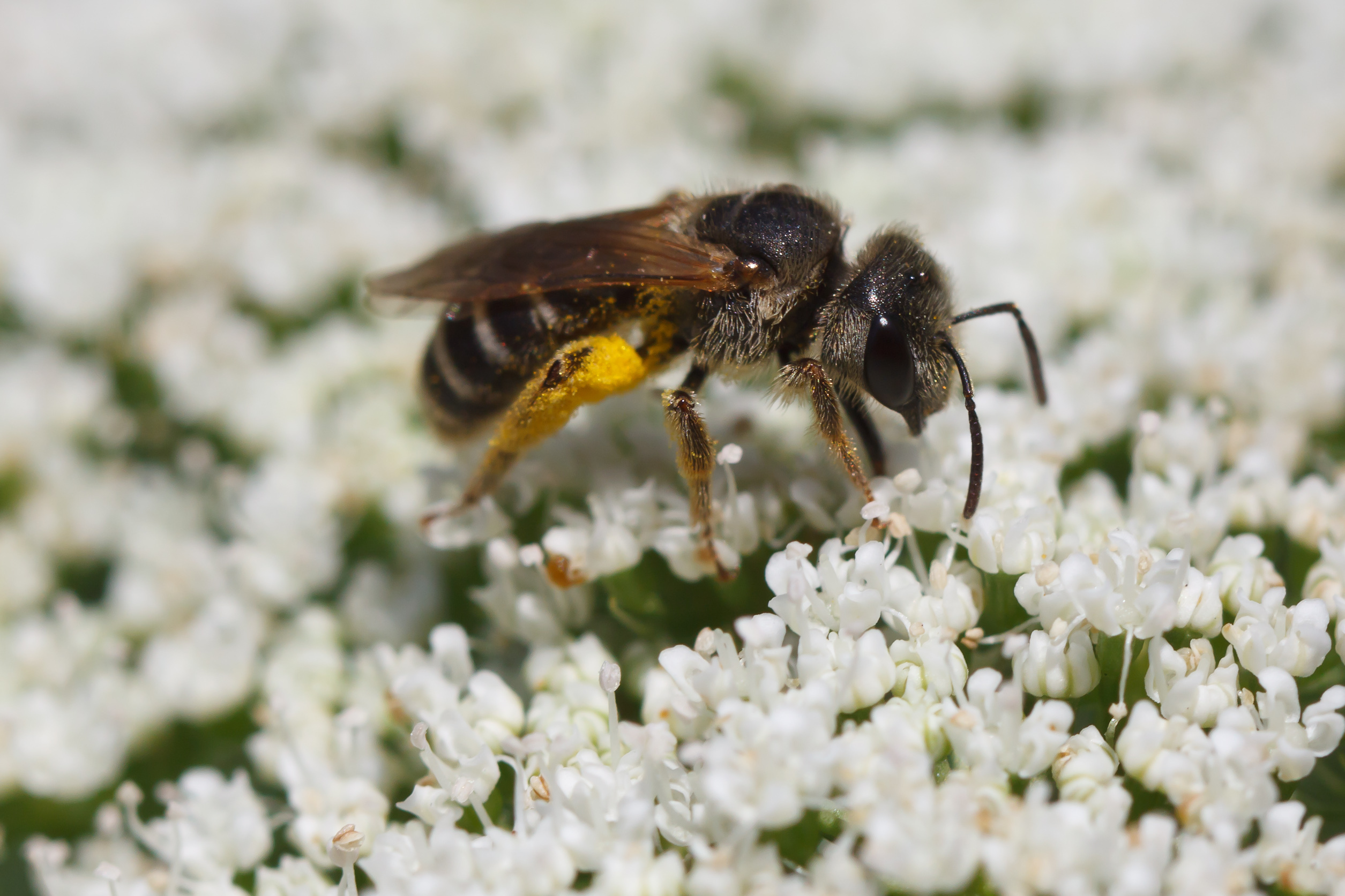
Habitat
These bees can be found worldwide but, here in North America, we have a shockingly large variety of Halictidae species, most of which are commonly found throughout the eastern United States. As with all aspects of the Halictidae family, there are a variety of nest types that each species makes.
The majority of halictids construct underground nests, some nests are built in rotting wood, and yet other species do not construct nests whatsoever. Many of the sweat bees that do not have nests are socially parasitic insects. These bees kill the eggs or larvae in another bee’s nest before replacing them with their own and consuming any food stores in the nest.
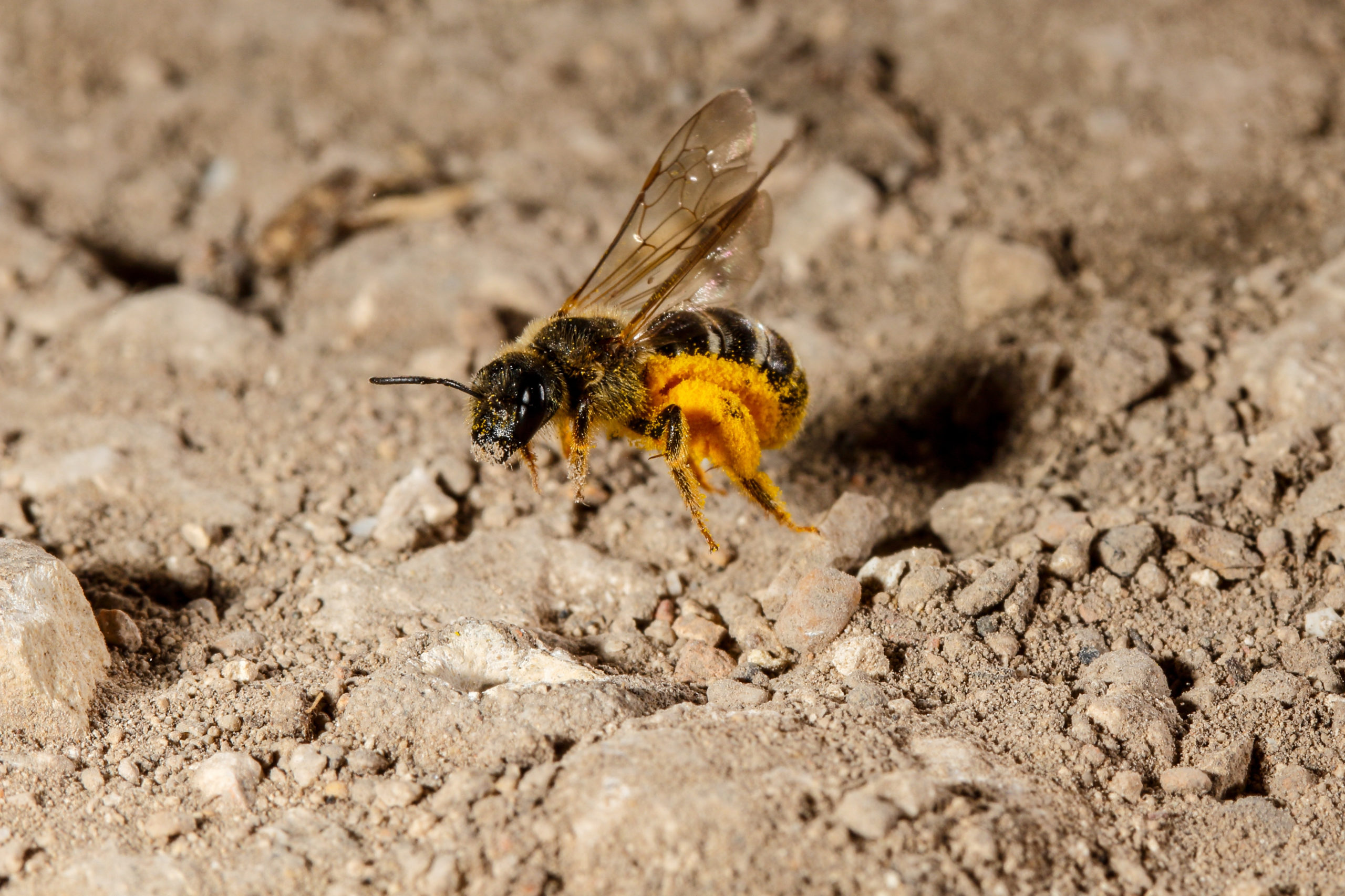
Diet
Halictids consume a variety of pollen and nectar from plants and, in the process, provide essential pollination to their local ecosystems. Similarly, the larvae eat from the pollen and nectar that is provided to them by their mothers. As a supplement to this diet, the adult bees will seek out sources of salt which is why they are drawn to human perspiration.
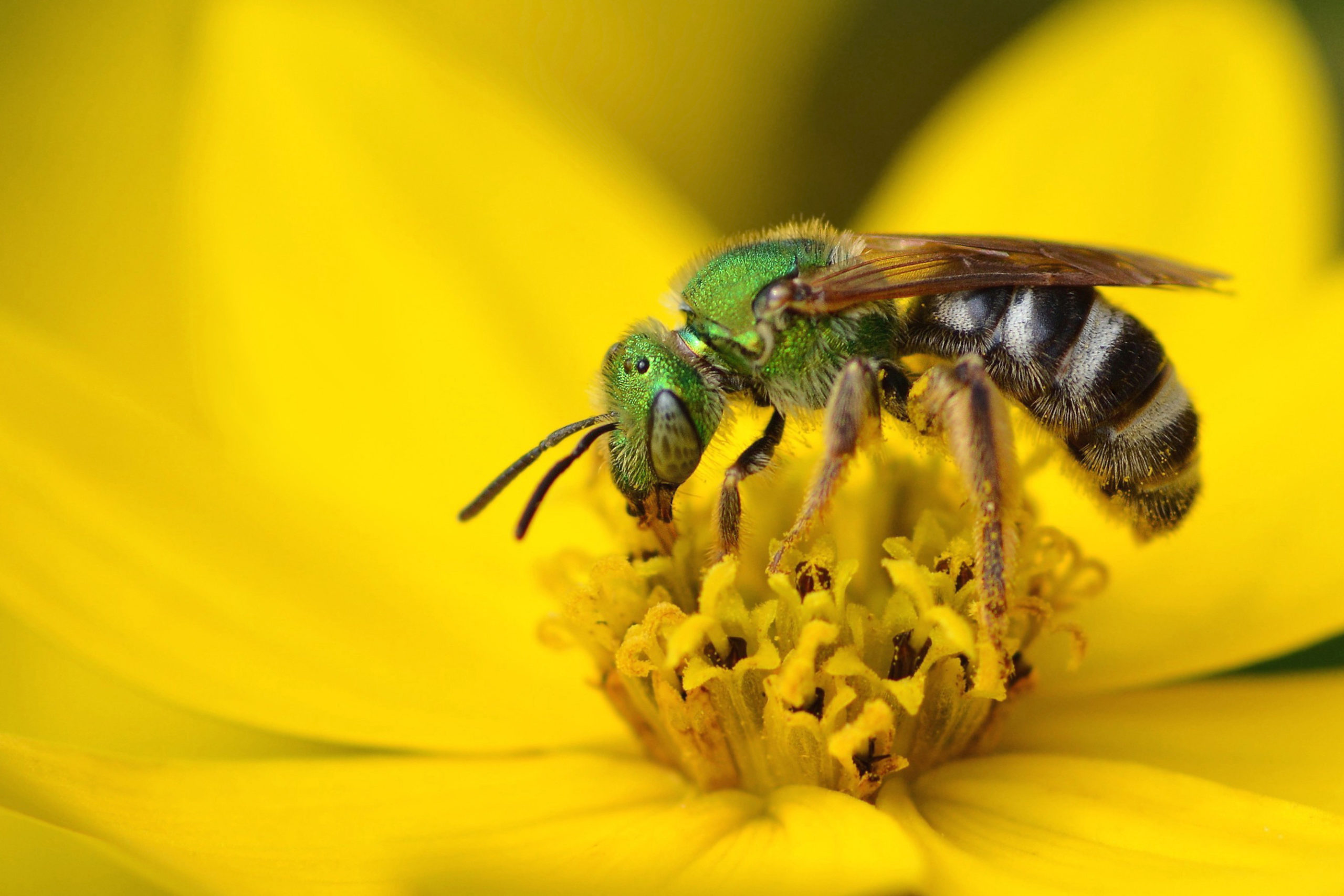
A Case of Mistaken Identity
What many people refer to as sweat bees aren’t sweat bees after all. Hoverflies have black and yellow striped bodies which makes them look more like typical bees than sweat bees. These flies also have a tendency to hover like hummingbirds and will fly around people. Biology Professor Peter Coppinger describes hoverflies as, “a beneficial insect. They’re harmless, and they help pollination, so they drink nectar, and their larvae will actually eat aphids.”
Aside from the coloration that can help decern these two kinds of insects from one another, hoverflies have only one set of wings, as opposed to halictids’ two, and lack a stinger.
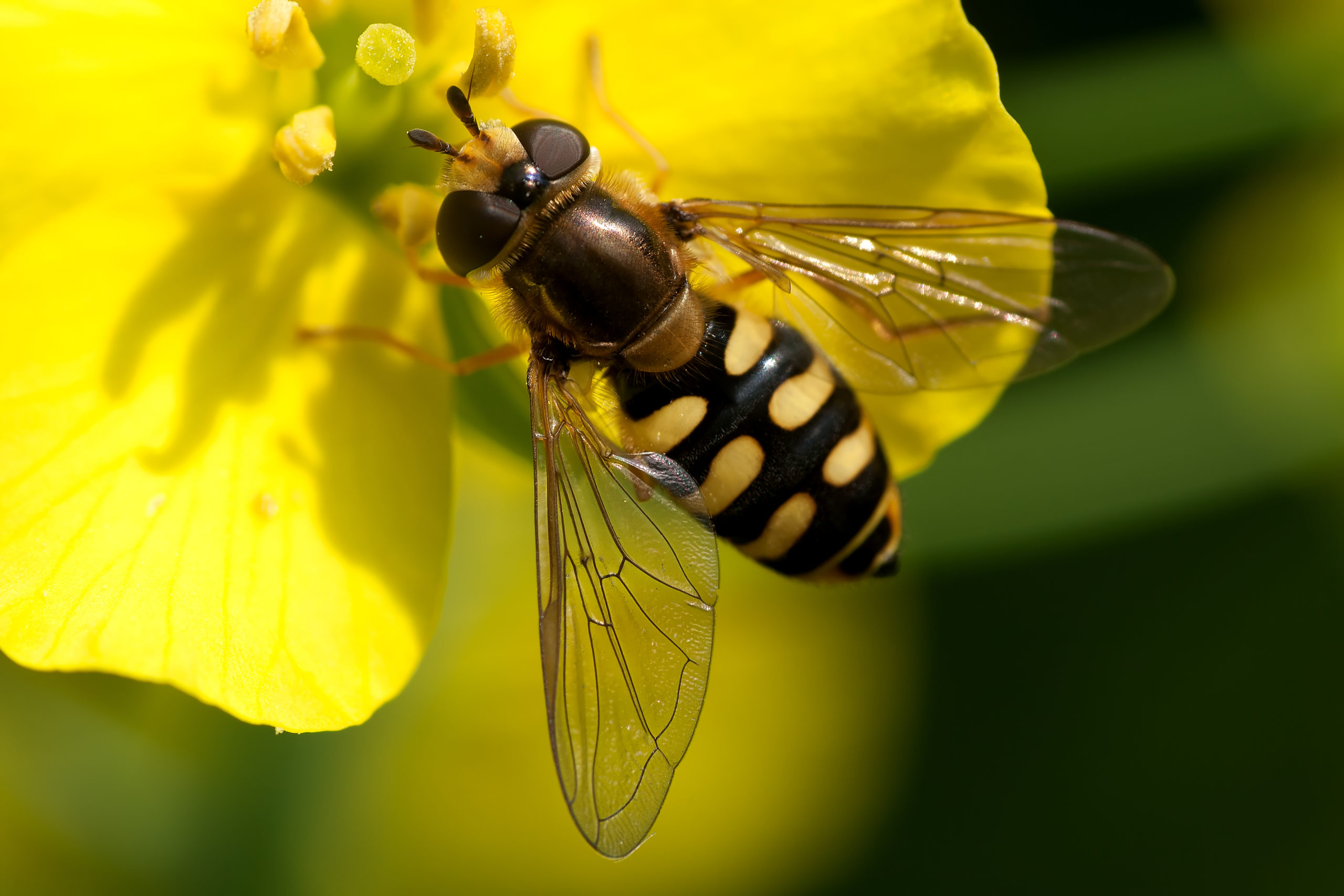
Treatments?
Similar to honeybees, sweat bees are also considered docile creatures and are very influential pollinators. As pollination is a fundamental process for the sustainability and survival of the world’s ecosystems, both honeybees and sweat bees are not considered pests and typical pest control services will not treat for them. But, in the case that you’re plagued by any of their cousins, wasps, hornets, or yellow jackets, Green Pest Services has got your back. If you need assistance identifying what insects are occupying your yard, feel free to contact us today and we can help you distinguish between sweat bees, hover flies, and any other type of wasp.

Citations
Buckley, K., Nalen, C. and Ellis, J. (2016) Sweat Bees (Halictid bees), The University of Florida Department of Entomology and Nematology. The Florida Department of Agriculture and Consumer Services. Available at: https://entnemdept.ufl.edu/creatures/misc/bees/halictid_bees.htm (Accessed: August 19, 2021).
Halictid bees (sweat Bees) (no date) Missouri Department of Conservation. Available at: https://mdc.mo.gov/discover-nature/field-guide/halictid-bees-sweat-bees (Accessed: August 19, 2021).
Is it a Sweat Bee or Hover Fly? (2016) YouTube. WTHI News 10. Available at: https://www.youtube.com/watch?v=EqbbFAclSbc (Accessed: August 19, 2021).
Tepidino, V. (no date) Halictid Bees, The U.S. Forest Service. The United States Department of Agriculture. Available at: https://www.fs.fed.us/wildflowers/pollinators/pollinator-of-the-month/halictid_bees.shtml (Accessed: August 19, 2021).
How to Maintain a Pest-Free Kitchen for the Holidays
How to Maintain a Pest-Free Kitchen for the Holidays How to Maintain a Pest-Free Kitchen for the Holidays Summary: This blog educates homeowners [...]
Pests That Invade Packages & Boxes: How to Prevent Hidden Infestations
Pests That Invade Packages & Boxes: How to Prevent Hidden Infestations Pests That Invade Packages & Boxes: How to Prevent Hidden Infestations Summary: [...]
Keep Pests Out of Your Holiday Gatherings
Keep Pests Out of Your Holiday Gatherings Keep Pests Out of Your Holiday Gatherings Summary: The holiday season is all about good food [...]
Cold Weather vs. Warm Weather Infestations: How Temperature Shapes Pest Activity
Cold Weather vs. Warm Weather Infestations: How Temperature Shapes Pest Activity Cold Weather vs. Warm Weather Infestations: How Temperature Shapes Pest Activity Summary: [...]
Garden Pests Do Not Hibernate Indoors – How They Attack Houseplants And What To Do
Garden Pests Do Not Hibernate Indoors – How They Attack Houseplants And What To Do Garden Pests Do Not Hibernate Indoors – How They Attack [...]
The Scariest Pests (And Why They Freak Us Out)
The Scariest Pests (And Why They Freak Us Out) The Scariest Pests (And Why They Freak Us Out) Summary: A practical, homeowner-friendly guide [...]

